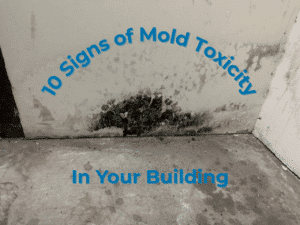Returning Office Occupancy Drives Increase in Indoor Air Quality Assessments

Indoor air quality assessments are at the forefront of property owners’ minds as buildings that were long empty during the worst of the pandemic now have growing numbers of workers returning to the office.
According to the Centers for Disease Control and Prevention (CDC), buildings left unoccupied for long periods of time are vulnerable to mold growth, dust in the HVAC system, and malfunctions in the HVAC system that may have developed while the building sat empty.
And there’s little question that the COVID-19 pandemic heightened sensitivity to healthy and hygienic work environments. Many property owners are more keenly aware of the role of indoor air quality in maintaining a safe and healthy workplace.
Employees too, are more sensitive to signs that may indicate air quality issues. Allergens or dust that trigger coughing or other symptoms are more likely to instill concerns. Eliminating indoor air pollutants that can trigger coughs is an important step for both the physical and psychological well-being of returning workers.
Peace of Mind From Mitigating Indoor Air Quality Risks
Business owners and property managers also appreciate the added “peace of mind” benefit that comes with a proactive approach to mitigating potential health risks. For employers looking to return to in-office work schedules, an Indoor Air Quality (IAQ) test ensures the standard parameters for temperature, relative humidity, CO, CO2 and particulates. Other potential contaminants can be evaluated such as total volatile organic compounds (TVOCs), polycyclic aromatic hydrocarbons (PAHs), ozone, hyrdrogen sulfide and many others.
The CDC regulates indoor air quality based on acceptable levels of toxins and pathogens present in air samples. These standards involve indoor air as well as outdoor air that can come into the building through infiltration and natural and mechanical ventilation.
ASHRAE Standard and Your Heating and Cooling System
The American Society of Heating, Refrigerating and Air Conditioning Engineers standards set minimum ventilation rates and other measures for new and existing buildings intended to provide indoor air quality that is acceptable. The standards require outdoor air to be coming into the building and that temperature and relative humidity stay within the ranges recommended by ASHRAE.
Meeting National Ambient Air Quality Standards
Under the Clean Air Act, the Environmental Protection Agency (EPA) sets National Ambient Air Quality Standards for six common pollutants:
- Ozone: Ozone at ground level is a harmful pollutant and is caused by chemical reactions between oxides of nitrogen and volatile organic compounds. This happens when pollutants emitted by cars, power plants, industrial boilers and chemical plants react in the presence of sunlight. Indoor computers, photocopy machines, printers and other office machines emit ozone.
- Particulate Matter: This mixture of solid particles and liquid droplets found in the air such as dust, dirt, soot and smoke can be inhaled deep into the lungs and cause serious health problems. Unpaved roads, construction sites and fires can release particulate matter in the air.
- Carbon Monoxide: At high levels, carbon monoxide indoors can cause dizziness, confusion, unconsciousness and death, according to the EPA. This colorless, odorless gas can build up indoors from unvented kerosene, space heaters, leaking chimneys, furnaces and gas stoves. Outdoors, carbon monoxide is emitted by cars, trucks and other vehicles.
- Lead: Past use of leaded gasoline, lead-acid battery manufacturers and lead-based paints can cause lead exposure. Once taken into the body, lead is accumulated in the bones and can adversely affect the nervous system, kidney function and the immune system. Lead can cause adverse neurological effects in children.
- Sulfur dioxide: The largest source is burning fossil fuels by power plants and smaller sources are volcanoes, locomotives, ships and other vehicle equipment with high sulfur content. It can harm the respiratory system and make breathing difficult.
- Nitrogen Dioxide: This chemical gets in the air from fuel sources and can harm the respiratory system and make breathing difficult. It can contribute to the development of asthma. It is released in emissions from cars, trucks, power plants and off-road equipment.
Indoor Air Quality Assessment and Remediation
The experts at Omega Environmental Inc. have the experience and licensing required to provide you with a thorough Indoor Air Quality Assessment and cost-effective remediation if needed. Contact us today to find out more about our services.










